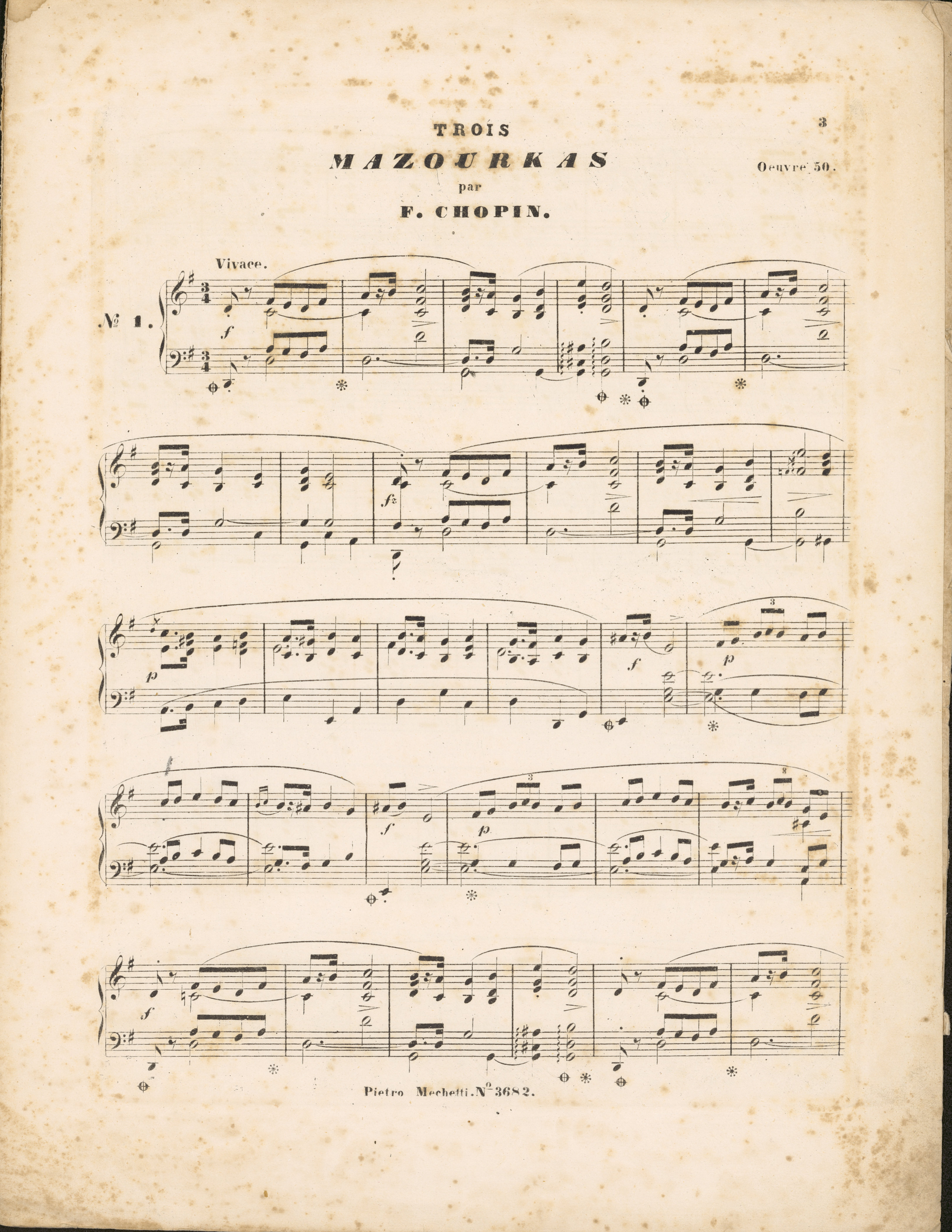



The articulation markings in b. 3-5, 27-29 and 59-60 prove that the composer was looking for the best manner to suggest the right character of this phrase. Mistakes and inaccuracies hamper figuring out the plethora of versions (in the case of slurring, there are as many as 8 versions). It seems that the starting point were the slurs present in A1 in b. 27-29; at the same time, according to us, the convergence of the slurs on the minim is apparent: the first slur was written (added?) inaccurately, shifted to the right:
1.  .
.
One could assume that b. 3-5 would have been provided with the same slurs if it had not been for an accidental oversight of the first one (it also applies to b. 59-61, which are marked in A1 as repetition of b. 3-5). This version stands out due to a slur combining the syncopated minim in b. 4 and analog. with the quaver opening the next phrase, which separates the minim from the preceding chords. Such a slur is absent in all the remaining sources.
The slur of Afrag probably represents the second stage of the search, in which everything was encompassed with one slur. The presence of an identical slur in EE in b. 27-29 most probably means that the slurs of A1 in these bars had been initially interpreted so in FE1 (in the final version of FE that slur was changed). The beginning of that slur is almost certainly inaccurate, which is indicated by the slur of Afrag in b. 11-12, by the slurs of a number of similar motifs in A1 and by the slurs of FE wherever Chopin proofread them (see below): all start from the semiquaver and not from the crotchet. Free from inaccuracies, the version is as follows (a slur of such a range was added by Chopin in the proofreading of FE in b. 59-60):
2.  .
.
Eventually, Chopin most probably rejected that version too; he shortened the slur to the form we can see in FE2 in b. 3-4 and in b. 27-28 in both FE:
3.  .
.
The slur present in all three places in GE1 differs from the above only in the fact that it starts later (from the crotchet). The arguments provided above when discussing the slur of Afrag apply also here: they indicate that GE most probably reproduced the notation of [A2] concerning that detail inaccurately (in GE1 the slur in b. 59 begins between the semiquaver and the crotchet; should it correspond to the notation of [A2], the slur could be interpreted as beginning from the semiquaver). Having included a corresponding correction, we can see that the version is present both in the later autograph and in the Chopinesque proofreading of FE, hence we adopt it to the main text in all places. In spite of the inaccurately reproduced beginning of the slur, the version of GE1 gives the fullest picture of articulation of that phrase thanks to the staccato dot on the 1st chord in b. 4 and analog.
The slur of FE1 (→EE) in b. 4 is a major misunderstanding: the slur that runs from the minim in A1 was reproduced as a slur reaching the minim (not to mention the fact of moving it under the stave, to the side of noteheads). Chopin replaced it with the final version of the slur in the proofreading of FE2. The same slur was in FE (→EE) in b. 60. Chopin added the top slur, running from the semiquaver in b. 59 to the 1st quaver in b. 61. A comparison with the proofreading of the two previous analogous places suggests that the Chopinesque entry was reproduced inaccurately, since the slur was led one note too far: it is particularly visible in b. 27-29, in which the original slur, preserved in EE, reached the 1st quaver in b. 29 and was shortened in the proofreading.
The versions of GE2 prove that its preparation was careless: the staccato dot in b. 28 was overlooked, while in b. 59-60 – both the dot and the slur.
As an alternative version with respect to the main text (slur No. 3 + staccato dot), we recommend the slurring No. 1, based on the notation of A1 and never replaced with another one in the preserved sources (the proofreading of FE always concerned its heavily distorted form).
Compare the passage in the sources »
category imprint: Differences between sources; Corrections & alterations
issues: Inaccuracies in A
notation: Slurs







